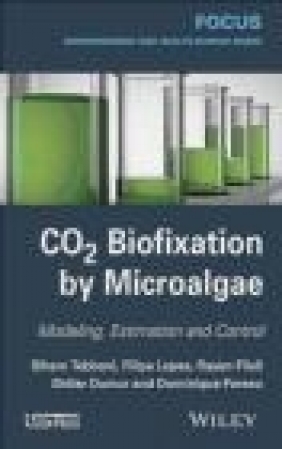CO2 Biofixation by Microalgae
Rayen Filali, Dominique Pareau, Didier Dumur
CO2 Biofixation by Microalgae
Rayen Filali, Dominique Pareau, Didier Dumur
- Wydawnictwo: ISTE Publishing Company
- Rok wydania: 2014
- ISBN: 9781848215986
- Ilość stron: 192
- Oprawa: Twarda
Niedostępna
Opis: CO2 Biofixation by Microalgae - Rayen Filali, Dominique Pareau, Didier Dumur
Due to the consequences of globa l warming and significant greenhouse gas emissions, several ideas have been studied to reduce these emissions or to suggest solut ions for pollutant remov al. The most promising ideas are reduced consumption, waste recovery and waste treatment by biological systems. In this latter category, studies have demonstrated that the use of microalgae is a very promising solution for the biofixation of carbon dioxide. In fact, these micro-organisms are able to offset high levels of CO2 thanks to photosynthesis. Microalgae are also used in various fields (food industry, fertilizers, biofuel, etc.). To obtain a n optimal C O2 sequestration us ing micr oal gae, their cul tivatio n has to be c arried ou t in a f avorable e nvironment, corresponding to optimal operating conditions (temperature, nutrients, pH, light, etc.). Therefore, microalgae are grown in an enclosure, i.e. photobioreactors, which notably operate in continuous mode. This type of closed reactor notably enables us to reduce culture contamination, to improve CO2 transfer and to better control the cultivation system. This last point involves the regulation of concentrations (biomass, substrate or by-product) in addition to conventional regulations (pH, temperature). To do this, we have to establish a model of the system and to identify its parameters; to put in place estimators in order to rebuild variables that are not measured online (software sensor); and finally to implement a control law, in order to maintain the system in optimal conditions despite modeling errors and environmental disturbances that can have an influence on the system (pH variations, temperature, light, biofilm appearance, etc.).Introduction ix Chapter 1 Microalgae 1 1.1 Definition 1 1.2 Characteristics 2 1.3 Uses of microalgae 3 1.4 Microalgae cultivation systems 10 1.5 Factors affecting algae cultivation 14 1.6 Conclusion 21 Chapter 2 CO2 Biofixation 23 2.1 Selection of microalgae species 25 2.2 Optimization of the photobioreactor design 31 2.3 Conclusion 32 Chapter 3 Bioprocess Modeling 33 3.1 Operating modes 33 3.2 Growth rate modeling 37 3.3 Mass balance models 47 3.4 Model parameter identification 49 3.5 Example: Chlorella vulgaris culture 51 3.6 Conclusion 63 Chapter 4 Estimation of Biomass Concentration 65 4.1 Generalities on estimation 65 4.2 State of the art 68 4.3 Kalman filter 72 4.4 Asymptotic observer 80 4.5 Interval observer 84 4.6 Experimental validation on Chlorella vulgaris culture 98 4.7 Conclusion 101 Chapter 5 Bioprocess Control 103 5.1 Determination of optimal operating conditions 104 5.2 Generalities on control 106 5.3 State of the art 108 5.4 Generic Model Control 110 5.5 Input/output linearizing control 114 5.6 Nonlinear model predictive control 119 5.7 Application to Chlorella vulgaris cultures 132 5.8 Conclusion 144 Conclusion 147 Bibliography 153 Index 173
Szczegóły: CO2 Biofixation by Microalgae - Rayen Filali, Dominique Pareau, Didier Dumur
Tytuł: CO2 Biofixation by Microalgae
Autor: Rayen Filali, Dominique Pareau, Didier Dumur
Wydawnictwo: ISTE Publishing Company
ISBN: 9781848215986
Rok wydania: 2014
Ilość stron: 192
Oprawa: Twarda
Waga: 0.48 kg



























